
1. Why The Hands Should Be In Front Of Ball At Impact, Golf Swing Tip
These different hand positions are all dependent and indicative of a correct swing arc. With the wedges and short irons, the swing arc, the circular motion the club takes around the body, bottoms out just after the ball during a normal shot. This is why a divot is produced after impact with the ball.
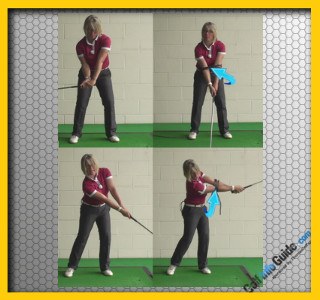
2. Golf Tip: How to Stop Over-Rotating the Hands
If you hit a lot of hard hooks – shots that dart sharply left (for a righty) – you're probably rotating your hands too quickly through the impact zone. Lets tackle a few possible causes of your over-rotation, and the ways you can fix the problem.

3. When Should you Hinge your Wrists in the Backswing? Golf Tip
It’s a question as old as the golf swing itself, and one with no definitive answer. Most instructors teach golfers to take the club back using the arms and shoulders, letting the wrists hinge naturally once the shaft is parallel to the ground. In other words, don’t consciously force the wrists to hinge, but avoid keeping them rigid beyond this point.
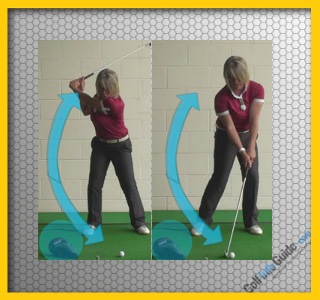
4. How To Keep Arms Relaxed In The Down Swing, Golf Tip
Keeping the body and especially the arms relaxed during the down swing is vital for both a solid strike and good distance on any given shot. Tension in the body will kill tempo and coordination throughout the swing. This is especially important on the down swing as the arms travel through impact.

5. Increase Power by Keeping Shoulders Closed, Golf Swing Tip
Modern swing theory focuses largely on the backswing rotation of the shoulders relative to the hips. The Jim McClean, measures the difference (in degrees) between the shoulder turn and hip turn at the top of the swing. The higher one’s X-Factor, the more power is stored in the coiled torso to be unleashed on the downswing.
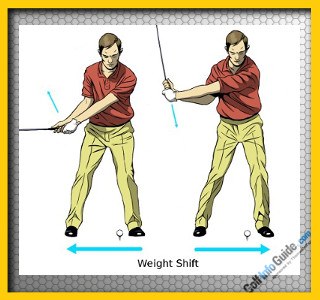
6. Stop Reverse Pivot With This Practice Golf Drill
The reverse pivot is one of the most common – and easily diagnosed – golf swing flaws. The golfer who reverse pivots suffers from poor rotation and weight shift on the backswing and downswing. Typically, his upper body leans toward the target on the backswing, then away from the target on the downswing – the opposite (reverse) of a proper motion.

7. Golf Swing Tip: Clear the Hips for Power, Accuracy
It’s a well-known axiom that at the moment of impact with the golf ball, the shoulders, arms, hands and club shaft should replicate their positions from address. But what about the hips? Do they follow the same rule? The short answer is, no. The hips should be square to the target line at setup, but when the club returns to the ball they should be open.
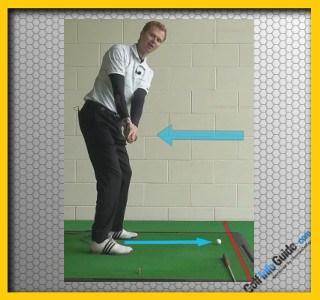
8. Causes and Cures: Golf Shots Off the Club’s Heel
If you tend to hit shots off the heel of the clubface – the portion closest to the shaft – the solution likely lies in your address position. Here are three common causes. Standing too close to the ball, Arms slack at address, Weight toward your toes.
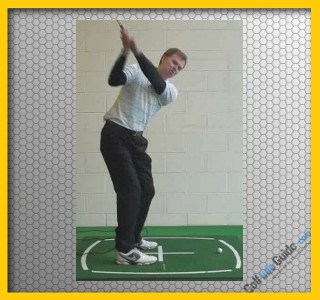
9. Upright Golf Swing Technique And Benefits, Golf Tip
In general terms, golfers should be looking to match their swing plane around their body Players who are tall tend to favor and enjoy more success with an upright swing plane and smaller players tend to favor a flatter plane although it is perfectly possible for either profile of player to use either swing.
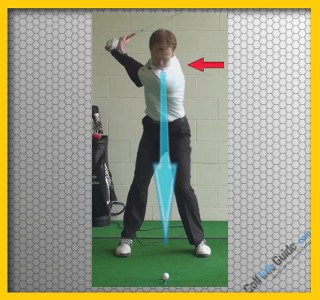
10. Shoulders Under Chin for Proper Golf Swing Rotation
It's a long-accepted rule that on the golfer's backswing, his shoulders should turn to form a 90° angle with the target line. But without looking into a mirror, how do you know if you've reached the magic number? Easy: Your left shouldershould be directly beneath your chin.





